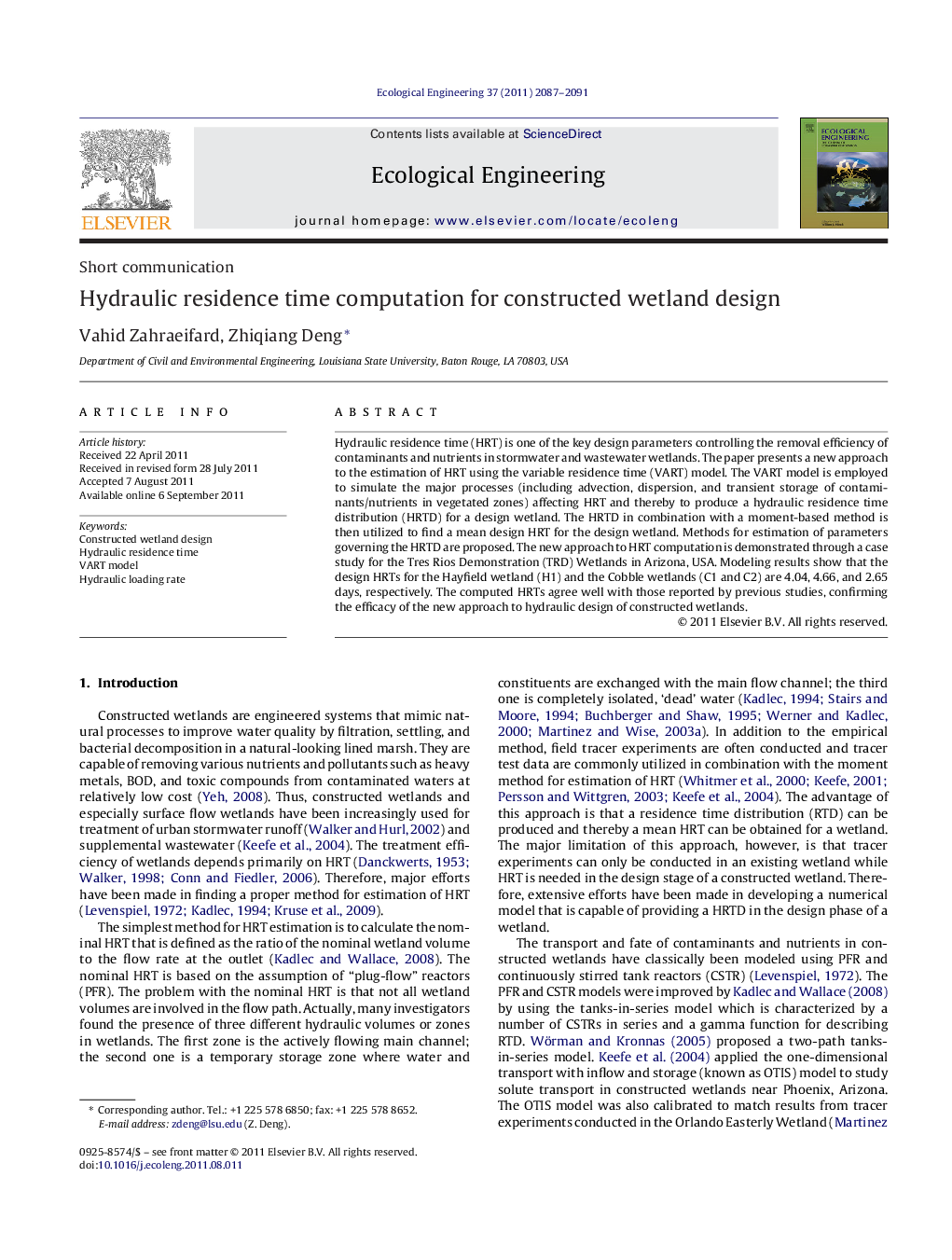| Article ID | Journal | Published Year | Pages | File Type |
|---|---|---|---|---|
| 4390174 | Ecological Engineering | 2011 | 5 Pages |
Hydraulic residence time (HRT) is one of the key design parameters controlling the removal efficiency of contaminants and nutrients in stormwater and wastewater wetlands. The paper presents a new approach to the estimation of HRT using the variable residence time (VART) model. The VART model is employed to simulate the major processes (including advection, dispersion, and transient storage of contaminants/nutrients in vegetated zones) affecting HRT and thereby to produce a hydraulic residence time distribution (HRTD) for a design wetland. The HRTD in combination with a moment-based method is then utilized to find a mean design HRT for the design wetland. Methods for estimation of parameters governing the HRTD are proposed. The new approach to HRT computation is demonstrated through a case study for the Tres Rios Demonstration (TRD) Wetlands in Arizona, USA. Modeling results show that the design HRTs for the Hayfield wetland (H1) and the Cobble wetlands (C1 and C2) are 4.04, 4.66, and 2.65 days, respectively. The computed HRTs agree well with those reported by previous studies, confirming the efficacy of the new approach to hydraulic design of constructed wetlands.
